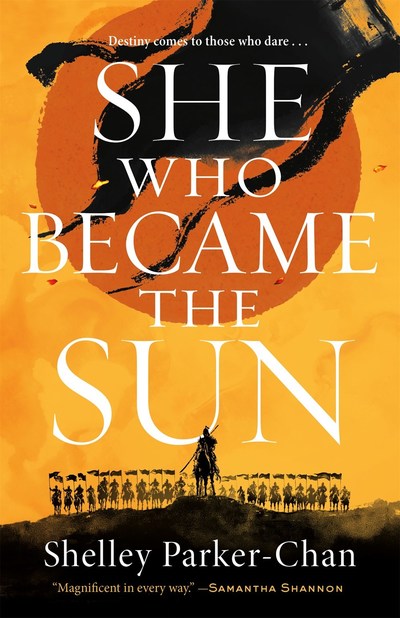We all inherit legacies: stories, traditions and skills passed down through generations. Some legacies tie us not only to our ancestors but also to the natural world. These two picture books honor such legacies and the invaluable lessons we learn from those who come before us.
Written by Newbery Medalist Patricia MacLachlan and illustrated by Chris Sheban, When Grandfather Flew is a tender story of a grandfather whose love of birds creates a lasting connection with his grandchildren.
Binoculars in hand, Grandfather teaches his grandchildren the names of birds. But even when they aren’t out birding, Grandfather has wisdom to offer, which he shares when he tells stories of their late grandmother, helps an injured chickadee and explains why eagles are his favorite birds.
MacLachlan gently touches on themes of aging and loss, approaching the topic of death with both a child’s simple honesty and the hard-earned wisdom of a long life lived well. Her narration is plain-spoken, conversational and earnest.
Sheban illustrates on rough paper using soft, blurry pastels, with linework in watercolor and graphite. Every inch of his full-bleed artwork is filled with color and texture. There’s a hazy, faded feeling to his images that echoes Grandfather’s failing eyesight and fits the story perfectly. However, like details we don’t forget even as our memories wane, a few images stand out: a piercing hawk’s eye, a kestrel in flight. Easily the most striking image in the book is an eagle winging high above the landscape, soaring over barns and trees. When Grandfather Flew is not a tear-jerker, but this moment left me feeling overcome.
When Grandfather Flew is a moving and intimate book with an underlying sense of gravity. For anyone who’s ever looked to the sky as they remembered someone they loved, it will be a story that resonates.
Some legacies are passed from one family member to another, while others carry the weight and traditions of generations. The First Blade of Sweetgrass: A Native American Story, written by Suzanne Greenlaw and Gabriel Frey and illustrated by Nancy Baker, tells the story of a grandmother teaching her granddaughter to pick sweetgrass—just as her own grandmother taught her.
It is a day of firsts for Musqon. It’s her first time seeing the ocean as well as her first time picking sweetgrass with her grandmother. But Musqon has a lot to learn, so Grandmother patiently shows her how to find the sweetgrass that they will weave into baskets. While they work, Grandmother shares stories of their ancestors, of her own childhood and of the sweetgrass’s importance.
Co-authors Greenlaw and Frey, who are citizens of the Houlton Band of Maliseet Indians and Passamaquoddy Nation respectively, write with generations of tradition and culture behind them. Their prose has a calm, patient tone that echoes Grandmother’s gentle ways and is rich with descriptive language, including lush portrayals of the book’s marsh setting and poetic lines like “the grass gave itself to her hand.”
In an afterword, the authors share a brief description of sweetgrass itself and discuss its history and importance to the Native people of the Wabanaki Confederacy. A glossary of Passamaquoddy-Maliseet words used in the book rounds out the back matter.
Illustrator Baker uses soft, muted earth tones to create artwork that feels ageless and conveys a sense of history, purpose and connection to the land. Her lovely wind-swept landscapes are full of detail without ever seeming harsh or sharp. Images that depict Grandmother’s past and the ancestors who came before are set off in frames made of sweetgrass braids.
The First Blade of Sweetgrass is full of meaningful messages, but particularly poignant is Grandmother’s reminder: “If we never pick the first blade, we will never pick the last one. We must make sure there will be sweetgrass here for the next generation.”





 Well. She’s spent years acting like just another one of the guys, so as Mara begins to actually excel on the gridiron, she’s surprised when her teammates’ sexism turns on her with full, resentful force. Even worse, four volleyball girls—including Mara’s frenemy, Carly, and crush, Valentina—join the team. Suddenly Mara’s a role model whether she likes it or not. (Reader, she does not.)
Well. She’s spent years acting like just another one of the guys, so as Mara begins to actually excel on the gridiron, she’s surprised when her teammates’ sexism turns on her with full, resentful force. Even worse, four volleyball girls—including Mara’s frenemy, Carly, and crush, Valentina—join the team. Suddenly Mara’s a role model whether she likes it or not. (Reader, she does not.)  In Dangerous Play, debut author Emma Kress demonstrates with devastating realism just how quickly things can change. When Zoe is sexually assaulted at a party, her optimism and confidence are crushed under the weight of PTSD, and her bright “fockey”-filled future now seems impossibly far away.
In Dangerous Play, debut author Emma Kress demonstrates with devastating realism just how quickly things can change. When Zoe is sexually assaulted at a party, her optimism and confidence are crushed under the weight of PTSD, and her bright “fockey”-filled future now seems impossibly far away.












